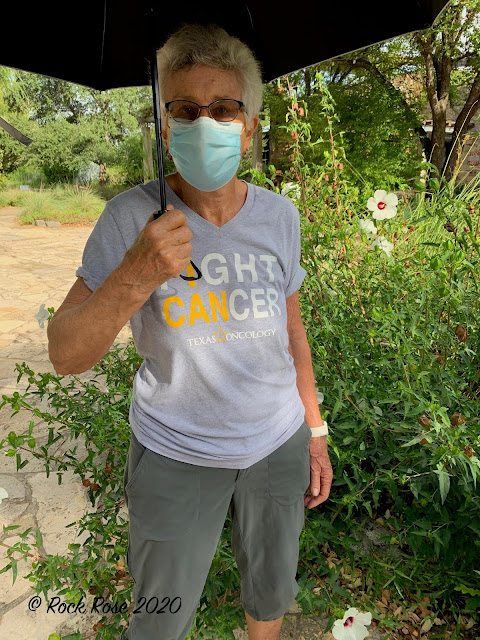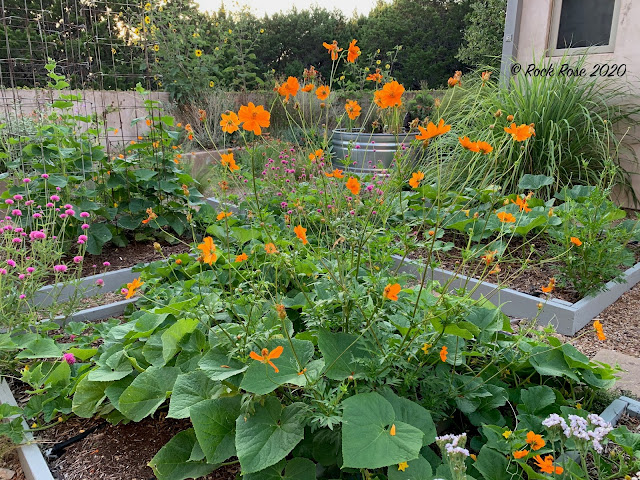Over the weeks we have watched the changes that have taken place out on the trails from the blooming and fading of blanket flowers, milkweeds and rudbeckia to the arrival of later bloomers like the skeleton flowers and silver nightshades.
 |
| Asclepias tuberosa |
 |
| Blanket flowers, Gaillardia pulchella |
Areas are mowed according to their vegetation and mowing has begun.
One of the reasons we enjoy walking the trails, other than the fact that we more or less have them to ourselves, is listening and spotting the painted buntings. As one birder said to us last week, when I asked him for confirmation of what I was hearing, "They are everywhere" And then as we rounded the corner we could hear one singing in the tree and the beautifully colored male flew right across our path. I hear them in the trees at our house but rarely see them. Unfortunately David cannot hear them but he was thrilled to catch sight of this one.
The Research Trail and the Arboretum Trail combined are a good 2 mile walk and we usually add a little on by walking the gardens too. Because they are under irrigation there us more blooming there. There are large stands of partridge pea Chamaecrista fasiculata which is a great butterfly plant.
The Texas bluebell, Eustomia exaltatum is always one flower that, beautiful as it is, just seems out of place in the Texas landscape. I have only ever seen one out on the trails but I have heard people say they have seen fields of this plant. Sometimes called Prairie gentian it grows best in well-drained moist soils.
I sowed seeds of this Mexican poppy this year but they just did not survive in my garden. I will try sowing them outside this fall. They are growing in several places in the demonstration gardens but I think they may have been put in as transplants. This year I will try sowing the seed directly in the garden.
We continued our walk to the Family Garden where the large stands of Giant coneflowers are setting seed.
And passed the cooling waterfall. Always a favorite spot for children.
I always stop just inside the archway of the Auditorium to check on the delicate clematis, Clematis pitcheri. Still a few blooms.

It was time for breakfast in the shade of the oak trees. It's always quite a rush to get everything together in th mornings but this was the first time I had forgotten the plates. Not a problem since I new exactly what to do from an experience in the 1990s when we rafted down the Grand Canyon. First night out our crew told us that they had forgotten the plates and we would have to make do eating our meals off our ammo can lid-covered in foil. And that's what we did for the next 5 days. Today we had a couple of lids and we made do. My egg tasted just as good as ever as I had not forgotten the salt which was much more important than the plates.
Have a great week everyone.










































